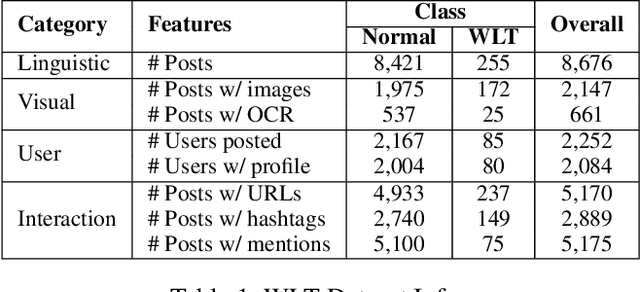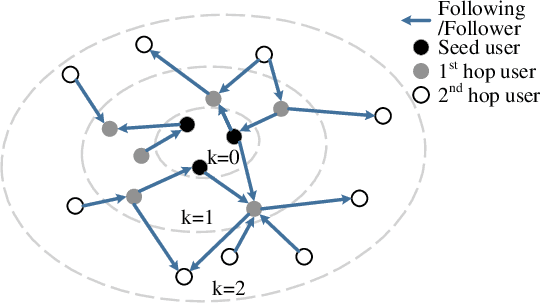Wildlife Product Trading in Online Social Networks: A Case Study on Ivory-Related Product Sales Promotion Posts
Paper and Code
Sep 25, 2024



Wildlife trafficking (WLT) has emerged as a global issue, with traffickers expanding their operations from offline to online platforms, utilizing e-commerce websites and social networks to enhance their illicit trade. This paper addresses the challenge of detecting and recognizing wildlife product sales promotion behaviors in online social networks, a crucial aspect in combating these environmentally harmful activities. To counter these environmentally damaging illegal operations, in this research, we focus on wildlife product sales promotion behaviors in online social networks. Specifically, 1) A scalable dataset related to wildlife product trading is collected using a network-based approach. This dataset is labeled through a human-in-the-loop machine learning process, distinguishing positive class samples containing wildlife product selling posts and hard-negatives representing normal posts misclassified as potential WLT posts, subsequently corrected by human annotators. 2) We benchmark the machine learning results on the proposed dataset and build a practical framework that automatically identifies suspicious wildlife selling posts and accounts, sufficiently leveraging the multi-modal nature of online social networks. 3) This research delves into an in-depth analysis of trading posts, shedding light on the systematic and organized selling behaviors prevalent in the current landscape. We provide detailed insights into the nature of these behaviors, contributing valuable information for understanding and countering illegal wildlife product trading.
 Add to Chrome
Add to Chrome Add to Firefox
Add to Firefox Add to Edge
Add to Edge